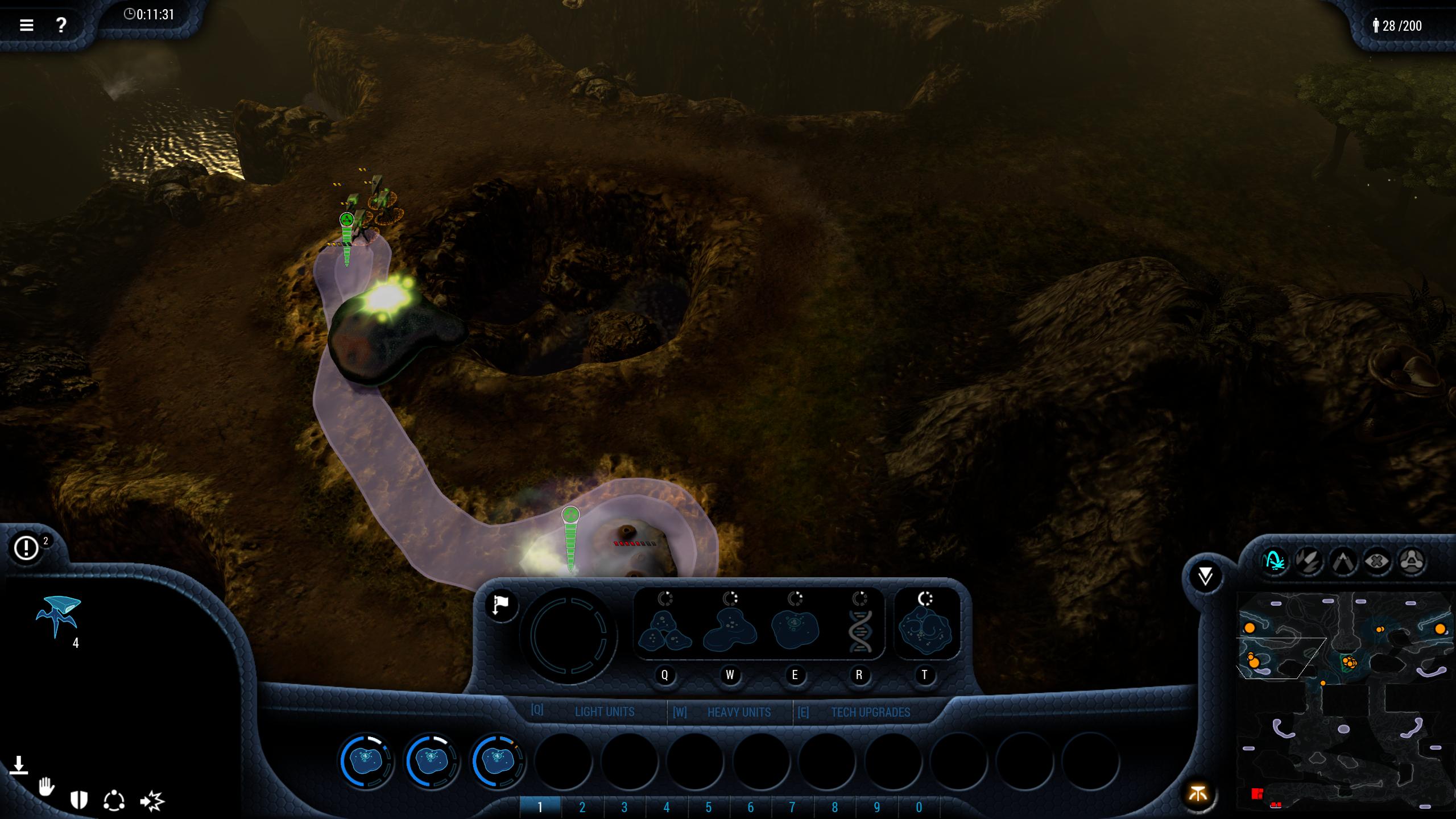
It's this completely different relationship to the map and to the resources on it that makes Grey Goo so instantly and intuitively engaging. The same map feels like a completely different space depending on you are playing, and who you are playing against.
The armies themselves don't seem particularly different, unfortunately, and they all seem to have versions of the same core set of units. If those differences are important, I haven't been able to discern how. There are little differences, like the way that Beta bombers behave more like carpet-bombing aircraft, while the humans launch pinpoint, high-damage airstrikes. Or how Goo artillery launches huge, slow-moving projectiles that explode into huge area-of-effect, damage-over-time puddles of goop. But overall, artillery is artillery, anti-air is anti-air, and so on.
Easy to play
But that simplicity might actually work in Grey Goo's favor. It's an enormously accessible game. Not just because of a forward-thinking interface design that routes almost every important command through the QWERTY row, but because it's really less about micro-management and positioning than it is about resource optimization and denial.
This is the other thing that's fascinating in Grey Goo: there's one resource, Catalyst, that's used for everything. It is available at nodes on the map, but it really behaves more like well-water. If you tap a "vein" of Catalyst, you are slowly depleting that entire vein, not just the area you're harvesting. The faster you use it, the faster the supply becomes exhausted. However, once a vein is exhausted, it slowly replenishes.

So a "greedy" build really will feel greedy, generating a resource boom while sucking the map dry. But this can be used aggressively as well: some maps feature long, river-like veins of Catalyst that are available to both players. Aggressively mining from that means that your opponent, on the other end, will see his own refineries start to dry-up. I've had entire games that turned into a shoving-match over shared resource patches, as raid and counter-raid tried to deny the enemy mining time.
Grey Goo is a very different kind of RTS from StarCraft 2 or Company of Heroes. It lacks the former's emphasis on unit micro and hard-counters, and the latter's emphasis on terrain. In many ways, it is a return to the 1990s RTS games where the developers of Petroglyph made their fame. But this is a very modern, expert preparation of these familiar ingredients, and it is one of the most instantly-enjoyable RTS games I've played in ages.
Correction: A previous version of this article placed Weta Workshop in Australia. We apologize for the mistake and will eat our weights in Marlborough green-lipped mussels in penance.
Keep up to date with the most important stories and the best deals, as picked by the PC Gamer team.

